If personalized medicine is on the cutting edge of disease diagnosis and treatment, Dr. Surangi Jayawardena’s research is on the cutting edge of personalized medicine. In fact, it’s hard to get much more pioneering than designing theranostic systems that incorporate both in-vitro diagnostic and therapeutic elements to nanosystems, the former through the inherent properties of nanomaterial fluorescence magnetic or surface plasmon resonance and the latter through the surface and core modification of nanomaterials for the purpose of transporting biorecognition molecules, small molecule drugs for targeted therapy.
“There is only a small scientific community working on nanomaterials and interfacing with microorganisms, like bacteria/viruses,” says Dr. Jayawardena, an assistant professor of chemistry in the College of Scienceat The University of Alabama in Huntsville (UAH). “I synthesize my own nanomaterials and make the surface modifications to do biological conjugation to target microorganisms. So I’m really glad to be here at UAH, because I bring a different angle to research here, one that is geared toward medical application.”
Dr. Jayawardena earned her Ph.D. in chemistry from the University of Massachusetts, Lowell under Dr. Mingdi Yan, researching applications of carbohydrate-conjugated nanomaterials known as glyconanomaterials. She then went on to accept a postdoctoral position with MIT, where she worked in the labs of Robert Langer on projects funded by Bill & Melinda Gates Foundation. One of the key projects was the thermostabilization of the oral polio vaccine. “The Gates foundation wanted us to see if we could prolong the stability of the vaccine by improving the vaccine formulation,” she says.
During that time, she and her colleagues also started looking into rapid diagnostics of tuberculosis (TB), in keeping with the World Health Organization’s mission of ending TB by 2030. Though not as prevalent in the U.S. as it is in Africa and Southeast Asia, TB rivals HIV/AIDs as the leading cause of death from infectious diseases; moreover, TB is rapidly becoming the leading cause of death among patients immunocompromised with HIV. “If you can detect TB, you can prevent the disease from spreading, but all existing methods require you have to go a clinic that has the facilities,” says Dr. Jayawardena. “We wanted to a find a way to diagnose it quickly in the field, like a pregnancy test. So it would have to be portable, quick, and have no storage requirements.”
Before they could crack the case, however, a positive pregnancy test of her own led Dr. Jayawardena to take a step back from the project and a step toward the stability of a full-time tenure track position. “I wanted to join a community where I could make the greatest change, and during my interview with UAH, I really liked what I heard about the opportunities to collaborate,” she says. “Now that I’m here, I have found the department to be most welcoming. I have also been given a light teaching burden, which allows me more time to do research.”
By building on the research she conducted MIT, she has already developed a low-cost diagnostic method to detect Mycobacteria sp. in sputum. Like the aforementioned TB test, this one requires no instrumentation and can confirm detection within a couple of minutes thanks to an external magnet that draws the Mycobacteria from the patient’s sample. “The work came to being through the fruitful efforts of my graduate and undergraduate students,” Dr. Jayawardena, who recently obtained a provisional patent for the test. These students include two Ph.D. candidates from UAH’s biotechnology and science engineering program, Kavini Rathnayake and Unnati Patel, and three students from UAH’s Research or Creative Experience for Undergraduates (RCEU) program, biology majors James Johnson and Melinda Mustain, and biology and chemistry double-major Veer Manohar Deverasetty, in addition to undergraduate chemistry major Andrew Sentell.
She is also working on developing a low-cost rapid point-of-care diagnostic to detect Chlamydia trachomatis. “Chlamydia is a challenge, because most people infected are asymptomatic,” she says, adding that young adults are especially at risk as they are the least likely to talk to their partners or health-care provider about the disease. “There’s also no easy way to get access to a test if you don’t speak to a heath care provider, and it’s expensive.” A quick, cheap, easy-to-use test could change that – and time is of the essence. “The rate of chlamydia has increased steadily in the U.S. since the 1980s,” says Dr. Jayawardena. “Chlamydia diagnostics make up a significant portion of the global STD diagnostics market.” To that end, she is partnering with Dr. Leonard Petnga, an assistant professor in UAH’s Department of Industrial & Systems Engineering and Engineering Management, to come up with a mathematical model that will help them avoid the time-consuming lab work required to determine the stability of a vaccine antigen in different formulations.
Dr. Jayawardena relies on a combination of awards and student labor to help fund her research and staff her two labs in UAH’s Materials Science Building, a synthetic one and a biosafety level 2 (BSL-2) one that can safely handle pathogenic microorganisms. In addition to generous startup provided to her upon arriving at UAH, she has received a 2017/2018 New Faculty Research award from UAH’s Office of the Vice President for Research and Economic Development (OVPRED), a 2017/2018 Research Infrastructure Fund award from UAH’s Office of Sponsored Programs, a 2018 Charger Innovation Fund award from UAH’s Office of Technology Commercialization, and a 2018 Individual Investigator Distinguished Research award from the OVPRED.
Going forward, Dr. Jayawardena hopes to secure funding from the National Institutes of Health (NIH). “When you need to fund applications related to infectious diseases, you look to the NIH,” she says. “But before that, I have to strengthen my core research to be able to compete against other top-tier researchers.” Fortunately, there’s plenty of work to go around. “The field of nanomaterials is still in its stage of infancy, application-wise,” she says, “and there’s a whole world to explore.”
